Translations:
Other Pages:
CEC Training Modules
Akan Studies Site Map
Sociology for beginners
Contact
Kompan Adepa
Go to the People
Ghana Web
Gods I; Tutelary Deities
by Phil Bartle, PhD
All God's Children
The tutelary deities, abosom, all seen as "children" or extensions of the Supreme Being, are considered to be the personalities which inhabit mountains, rocks, caves, and rivers. The meaning of "כbosom" (כbo = rock, som = carry) is not exactly clear, but may mean "to support a rock," or "the rock which supports." It is therefore interesting to see that when the ancestral stool is brought into pubic, it is always placed upon some rocks on the ground... See Ancestors I.
The god Tano is the stool god for Obo. It came with the Amoakade matriclan from an area at the head of the Tano River in what is now Brong Ahafo in Western Ghana near the Côte d'Ivoire border. .. The stool drums (talking drums) recite a poem that includes: "The stream crosses the path. The path crosses the stream. Which came first? Pure, pure Tano" .. It was explained to me that the gods (streams) were here before the people (ancestors).
The Guan people inhabited the area before the Akan came. They were patrilineal and their chiefs were usually also priests... While there was likely some warfare, only a few warriors would have been killed, and the wives and children kept and integrated into the Akan social organization. The Akan kept the names and practices of the local gods. .. Personalities and morals are inherited from fathers, as each god became an origin of a different patriline (ntorכ). Like other offices such as stools (signifying offices in the oman structure) the gods are now each "owned" by a matrilineage.
Some currently matrilineal corporate descent groups, such as that of the Ankobeahene of Obo, relate that they were originally patrilineal but, with the arrival of the Akan, they converted from patrilineal succession and inheritance, and the formation of descent groups, to matriliny.
Rivers and Rocks
 |
Sacred Bosom Pra River South of the Kwawu Escarpment
(before it makes its long journey to the coast between Cape Coast and Takoradi)
While rivers appear red because of the iron oxide in the soil, they are still considered the white part of the universe, as seen in waterfalls and springs. Three Souls.
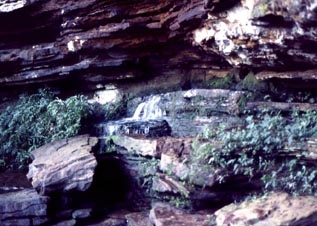 |
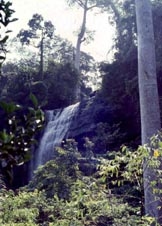 |
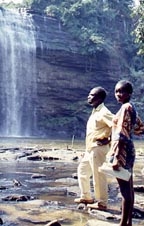 |
Spring, Waterfall. Geographer and former Member of Parliament, the late Ben Ofori
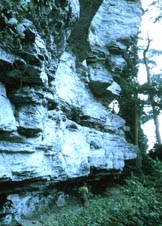 |
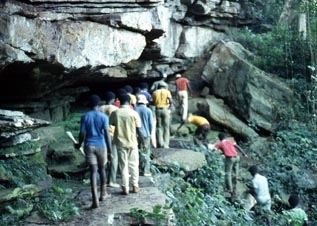 |
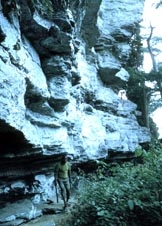 |
Rock Faces, Cliffs, Overhangs and Shallow Caves are Also Gods
Chief Among Kwawu Gods, Buruku
 |
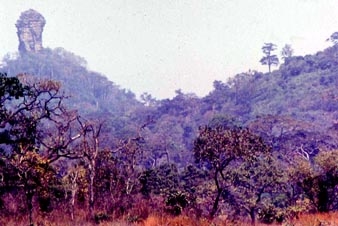 |
Chief among the Kwawu Gods is Buruku on the north side of the Escarpment. An inselberg
Once the central core of an active volcano, the inselberg is now all that is left as the earth around it eroded away over the millennia. Its phallic image is unmistakable.
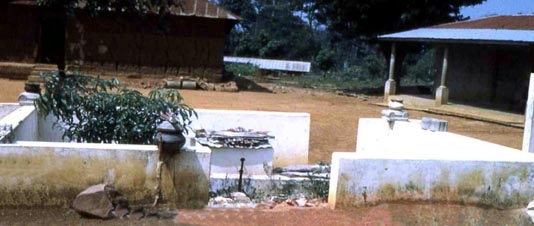 |
 |
Shrine of the Chief God, Buruku, at Kwawu Tafo
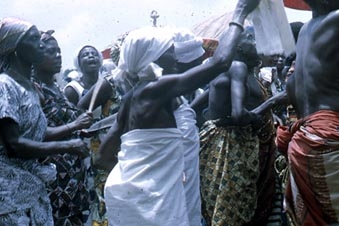 |
 |
Acolytes and supporters of the god, Buruku, during an afahye
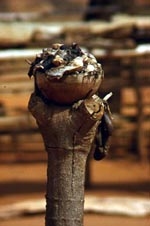 |
Onyame Dua (God Stick) Alter
The Rock
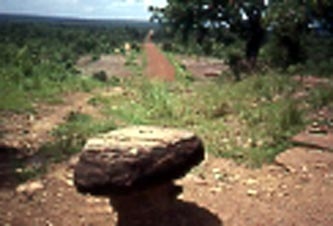 |
The Rock
While this well known legend is a story with no objective evidence, I also read it in a diary entry of a District Commissioner in the Public Records Office in London. When the British were building a new road north of Ashanti, they hired a Scottish engineer to implement the project. On finding this rock in the way of the planned road, being a practical man, he ordered that it be moved out of the way. "You can not do that," said his workers, "it is a god." Although they moved it, when they showed up for work the next morning it was back in place. Being a practical man, he ordered it put on a lorry and carried a few kilometres away. When they showed up for work the next morning it was back in place. Being a practical man he ordered it put on a lorry and carried thirty kilometres away. When they showed up for work the next morning it was back in place. Being a practical man he designed a new road route that went around the rock.
Food for the Gods
Once a year the first yams must be blessed. No one may eat new yams until this is done. The priestesses prepare eto. Eto is a mixture of mashed (not pounded into fufu) yams, palm oil and eggs. It is often fed to people when they are ill, and to old people with no teeth. It is considered a favourite among the gods. the head priestess will put a bit of the mixture on the door step of all the established stool houses (locations of the major matrilineages in the town).
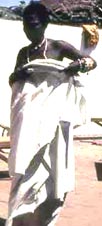 |
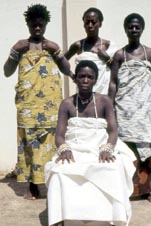 |
 |
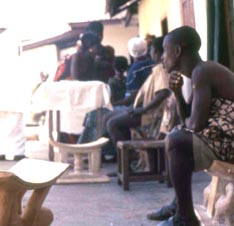 |
 |
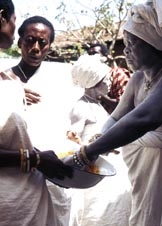 |
 |
Preparing the Eto
The word "odwira" (annual ritual cleansing or baptism) appears to be derived from the word "guare" (wash).
Asuboni
>Asuboni (asu = water; boni = bad, naughty) is a little river which begins on Obo land north of the town, and runs northwest, crossing the road between Mpraeso and Nkwatia, and finds its way into the Afram River (Volta Lake). The כkomfo wears a smock similar to those among the Guan of the North, as do many of the other gods (see Nana Duru, Tano Akomfo). The smocks are popular with older gods, but not those as old as the ones wearing raffia skirts.
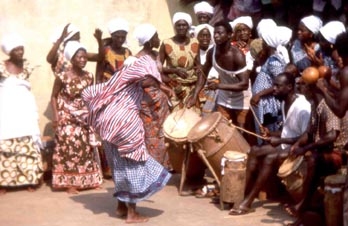 |
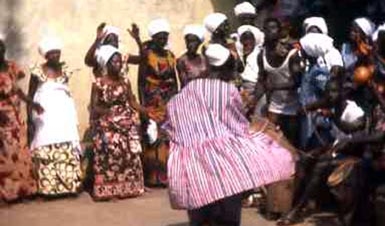 |
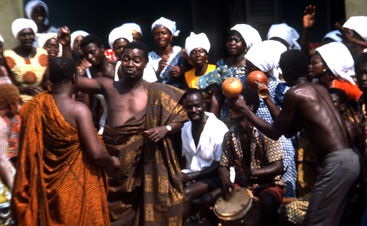 |
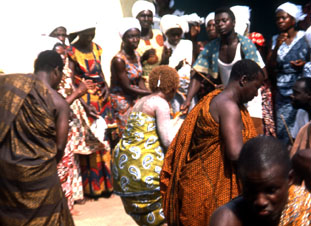 |
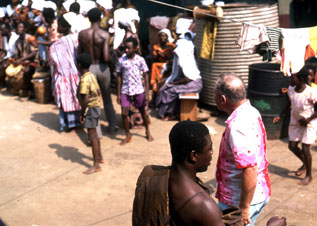 |
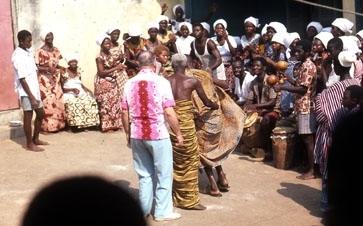 |
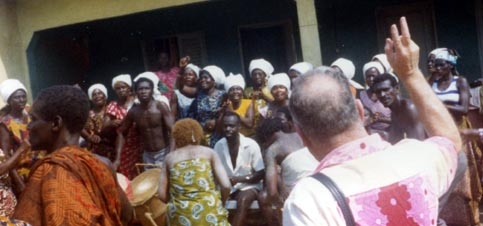 |
Al Bartle Visits and Dances with Asuboni Komfo
The rattles used above as percussion instruments are made from the calabash fruit.
Files in the Religion set: |